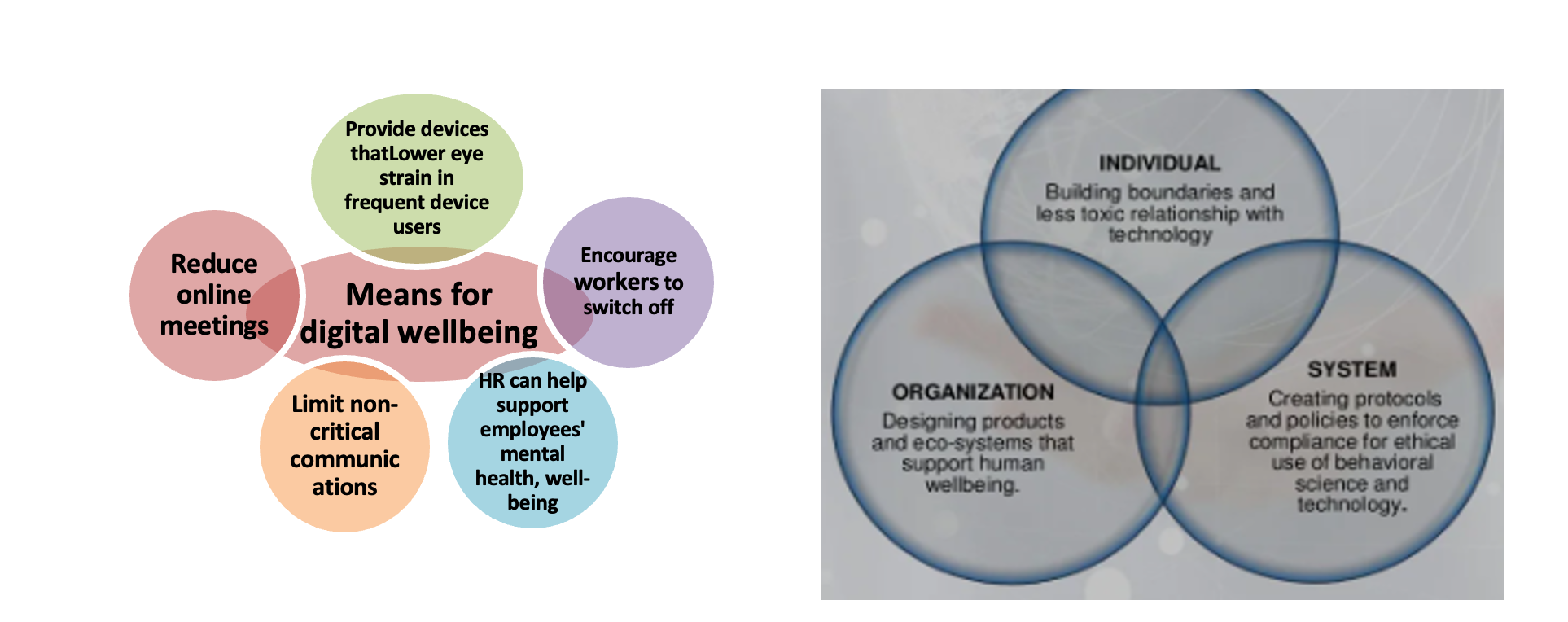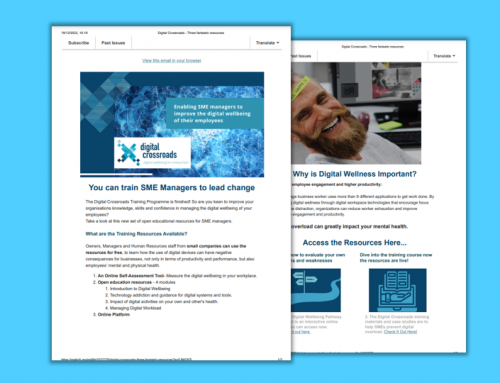The future of work and digital wellbeing
The pandemic has totally transformed the way we work – it has provided many employees with options on where, when and how they work. Such options are innovative, adaptable and flexible. But on the flipside, such options has also challenged the physical & mental health, productivity, and ability to communicate effectively at work. This is where digital wellbeing comes into play. Digital Wellbeing is a critical sustainability factor in the future of work. It is all about integrating technology effectively in order to enhance the human potential and experience rather than becoming it.
Of recent there is increased acknowledgement of the importance of mental health in achieving global development goals, as illustrated by the inclusion of mental health in the Sustainable Development Goals. Hence, organizations and companies worldwide need to consider Digital Wellbeing as a part of their strategy and reflect on – “Are we creating the problem or the solution? Are we losing customers, investors, market share because of it?” The table below highlights the current status and strategies to overcome challenges.
CAUSE/STATUS
Covid-19 has accelerated trends towards greater digitalisation in how we work. Exponential rise in digital communications, operations and processes.
With most people wanting to work from home more post-pandemic, online communication, operations and processes are set to become permanent and frequent features of our professional lives.
EFFECT
Potential to change employee experiences for the better – if the associated risks are also mitigated.
Benefits: greater productivity and flexibility for people who might otherwise have left the workforce
Challenges: increased isolation and a blurring of the lines between work and home. distractions or caring responsibilities in the home more so for working mothers.
STRATEGY
Offer support at every level of their operations.
Leadership has to model the right behaviours
Policies should reflect a more flexible landscape and digital tools can replicate current support systems online. Transparency throughout is central.
Employers should provide guidance and rules around working from home.
Digital wellbeing – The future of work
It is the use of technology to ensure an employee’s physical and mental health. The aim of digital wellbeing is to design technology in such a way that it promotes healthy use, optimum output and productivity, and proactively assists the user to maintain a healthy lifestyle for a proper work life balance.
Importance of Digital wellbeing – The future of work
Digital wellbeing is needed for highly engaged and productive employees, who lead healthier lives during and outside of work. It enables employees to focus on their work and cause less exhaustion and distraction. Employees who don’t pay attention to digital wellbeing may see negative effects from overuse of technology. This dependency can also increase employees’ anxiety and stress levels as well as burnout; decline in their mental and physical health. Focusing on digital wellbeing enables workers to lessen these risks.
Examples of digital wellbeing technology – The future of work
Google offers a Digital Wellbeing app for Android device users who are aiming to find a balance with technology. For example, Google Wind Down is a feature that flips the screen to grayscale at a specified bedtime and uses the Do Not Disturb mode to silence all notifications, including phone calls. People can use a timer to set limits on how much they use their devices or apps and view detailed information on how they spend time on their phones.
Ways to develop digital wellbeing among employees
As remote work gains popularity and employees spend less time in physical offices, people are challenged with finding a healthy work-life balance.
Consequently, employers can help their workers reach this balance. To encourage digital wellbeing among employees, companies can set some digital ground rules, including the following:

Created with input from – https://www.sodexoengage.com/blog/employee-wellbeing/what-is-digital-wellbeing
#digitalwellbeing #newnormal #futureofwork # sustainability #work-life balance
References:
- https://www.androidauthority.com/digital-wellbeing-1081641/
- https://www.citrix.com/en-in/solutions/digital-workspace/what-is-digital-wellbeing.html#:~:text=Digital%20wellbeing%20(also%20known%20as,workplace%20and%20in%20personal%20life.
- https://www.sodexoengage.com/blog/employee-wellbeing/what-is-digital-wellbeing
- https://www.who.int/news-room/fact-sheets/detail/mental-disorders





